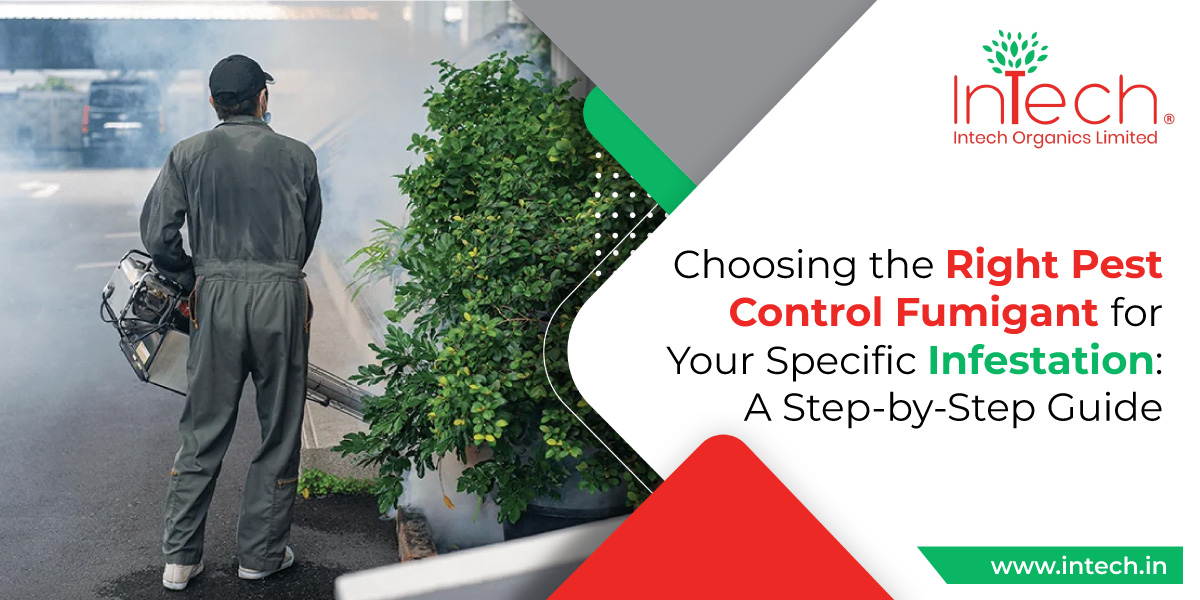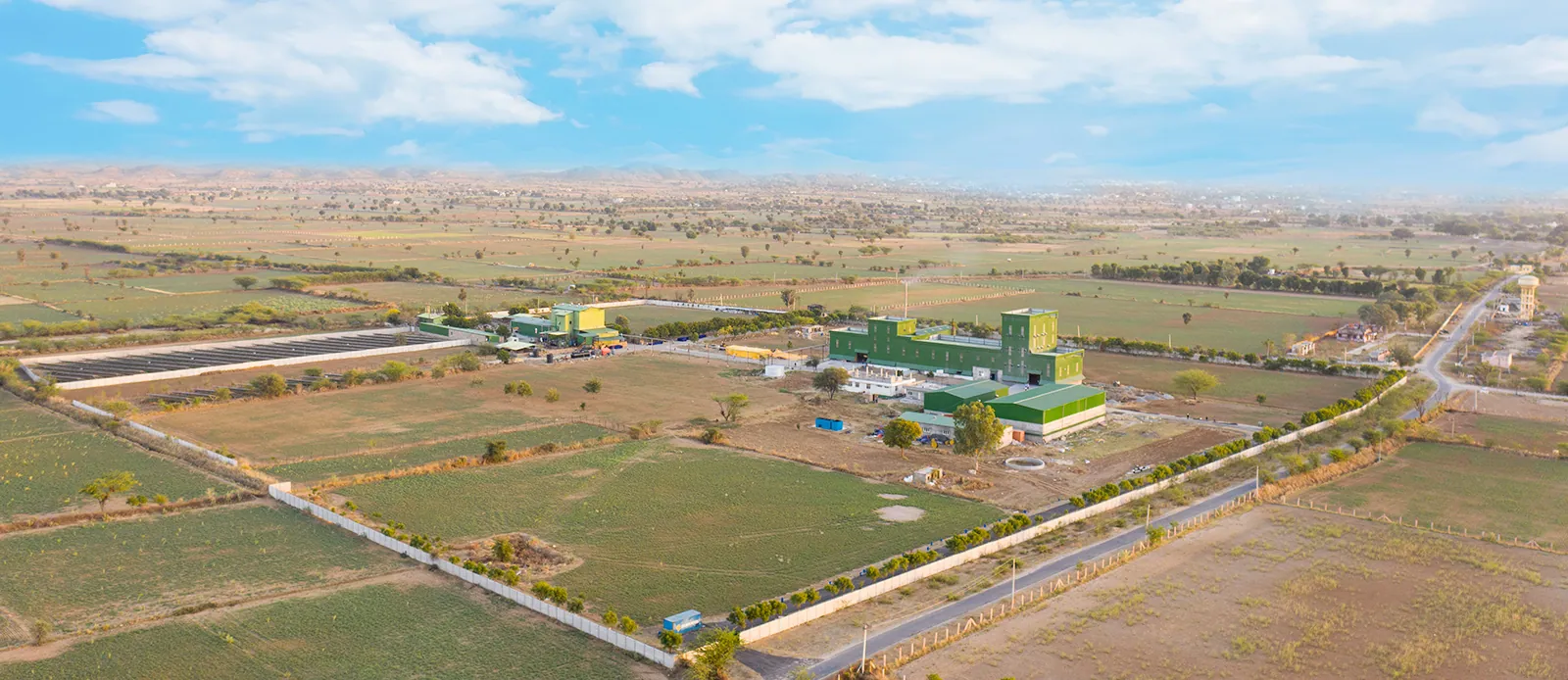
![]() 16-Apr-2024
16-Apr-2024
Choosing the Right Pest Control Fumigant for Your Specific Infestation: A Step-by-Step Guide
Infestations of pests are a chronic annoyance that may wreak havoc on residential and commercial properties, as well as agricultural settings. Finding the appropriate fumigant is essential for effective pest control, regardless of whether the insect in question is termites, bed bugs, rats, or another type of pest. In this comprehensive guide, we'll walk you through the steps to choose the right Pest control fumigants for your specific infestation.
Overview of Pest Control Fumigants:
Pest control fumigants are essential tools in the fight against stubborn pests that infest homes, businesses, and agricultural settings. These potent chemicals are designed to eliminate a wide range of pests, including termites, bed bugs, cockroaches, rodents, and stored product pests. Fumigants work by releasing toxic gases or vapours that penetrate the infested areas, reaching pests hiding in cracks, crevices, and other inaccessible spaces.
One of the key advantages of fumigants is their ability to provide comprehensive pest control, targeting pests at all stages of development, from eggs to adults. Unlike surface sprays or baits, which may only affect pests that come into direct contact with the treatment, fumigants disperse throughout the treated area, ensuring thorough coverage and eradication.
There are several types of pest control fumigants available, each with its unique properties and applications:
-
Gas Fumigants: Gas fumigants, such as sulfuryl fluoride, methyl bromide, and phosphine, are commonly used in structural fumigation and commodity fumigation. These gaseous chemicals penetrate deeply into structures, soil, or stored products, effectively eliminating pests and their eggs. Gas fumigants require specialized equipment and trained professionals for safe and effective application.
-
Liquid Fumigants: Liquid fumigants, such as formaldehyde and chloropicrin, are used in enclosed spaces or as soil treatments to control pests. These volatile liquids vaporize upon application, releasing toxic fumes that target pests in the treated area. Liquid fumigants are often used for localized treatments or spot fumigation in specific pest-infested areas.
-
Solid Fumigants: Solid fumigants, such as aluminium phosphide and magnesium phosphide, come in the form of tablets or pellets that release phosphine gas when exposed to moisture in the air. These fumigants are commonly used for grain fumigation, as well as for controlling pests in stored agricultural commodities. Solid fumigants provide long-lasting protection against pests and are relatively easy to apply.
When using Pest control fumigants, it's essential to follow safety precautions and regulatory guidelines to minimize risks to human health, non-target organisms, and the environment. Proper application techniques, such as sealing the treated area, monitoring fumigant concentrations, and ensuring adequate ventilation, are critical for safe and effective pest control.
The Importance of Choosing the Right Fumigant:
Before delving into the selection process, it's essential to understand why choosing the right fumigant matters. Using the wrong fumigant can lead to ineffective pest control, potential health hazards, and environmental risks. By selecting the appropriate fumigant, you can ensure targeted and efficient pest eradication while minimizing adverse effects.
-
Step 1: Identify the Pest Species:
The first step in selecting the right fumigant is to accurately identify the pest species infesting your property. Different pests require different treatment approaches, so precise identification is crucial. Common pests include termites, bed bugs, cockroaches, rodents, and stored product pests. If you're unsure about the pest species, consider consulting with pest control professionals or using online resources for identification.
-
Step 2: Assess the Infestation Severity:
Once you've identified the pest species, assess the severity of the infestation. Is it a minor issue confined to a small area, or has the infestation spread extensively? The severity of the infestation will influence the type and concentration of fumigant needed for effective control. For severe infestations, stronger fumigants may be required, whereas milder infestations may be addressed with less potent options.
-
Step 3: Consider Environmental Factors:
Environmental considerations play a significant role in selecting the appropriate fumigant. Factors such as temperature, humidity, ventilation, and the presence of sensitive materials or living organisms in the vicinity can impact fumigant efficacy and safety. Choose fumigants that are suitable for the prevailing environmental conditions and adhere to safety guidelines to minimize risks.
-
Step 4: Evaluate Fumigant Options:
With a clear understanding of the pest species, infestation severity, and environmental factors, it's time to evaluate fumigant options. There are various types of fumigants available, including gas, liquid, and solid formulations. Each type has its unique characteristics, application methods, and efficacy against specific pests. Consider factors such as application ease, penetration ability, residual effects, and safety profiles when comparing fumigant options.
-
Step 5: Consult with Pest Control Professionals:
Choosing the right fumigant can be a complex process, especially for large or challenging infestations. Don't hesitate to seek advice from pest control professionals who have expertise in fumigation techniques and product selection. They can assess your specific situation, recommend suitable fumigants, and ensure proper application for optimal results. Additionally,Pest control companies in India can provide valuable insights into local pest trends and regulatory requirements.
-
Step 6: Follow Safety Precautions:
Safety should always be a top priority when using Pest control fumigants. Before application, carefully read and follow the manufacturer's instructions, safety guidelines, and regulatory requirements. Use appropriate personal protective equipment (PPE), such as gloves, goggles, and respirators, to minimize exposure to fumigant chemicals. Ensure proper ventilation during and after fumigation to prevent residual fumigant buildup and potential health risks.
-
Step 7: Monitor and Evaluate Results:
After fumigation, monitor the treated area regularly to assess the effectiveness of the treatment and any signs of pest resurgence. Keep track of pest activity levels, property damage, and any adverse effects on non-target organisms or the environment. If necessary, follow up with additional treatments or adjustments to achieve long-term pest control solutions.
Closing Thoughts:
Choosing the right pest control fumigant is critical in effectively managing pest infestations and protecting your property. By following this step-by-step guide and considering factors such as pest species, infestation severity, environmental conditions, and safety precautions, you can make informed decisions and achieve successful pest eradication outcomes. For high-quality pest control chemicals in India, trust InTech - your reliable partner for Pest management solutions.
Are you looking for top-quality pest control chemicals in India? Choose InTech for a comprehensive range of Pest control products as well as Pest control supplies. Visit our website today to browse our extensive selection and place your order for effective Pest management solutions.
